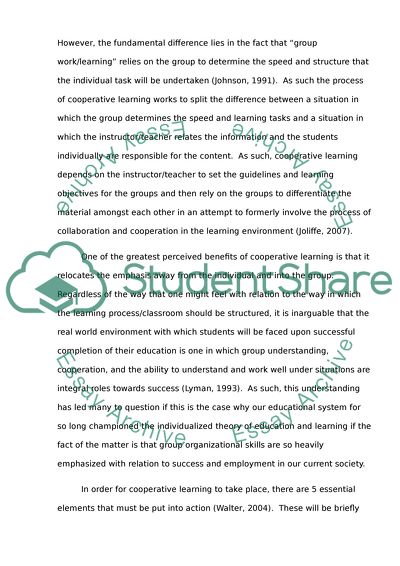Cite this document
(“Cooperative Learning: A Review of the Process and Current Scholarly Research Paper”, n.d.)
Retrieved from https://studentshare.org/education/1401683-pros-and-cons-of-cooperative-learning
Retrieved from https://studentshare.org/education/1401683-pros-and-cons-of-cooperative-learning
(Cooperative Learning: A Review of the Process and Current Scholarly Research Paper)
https://studentshare.org/education/1401683-pros-and-cons-of-cooperative-learning.
https://studentshare.org/education/1401683-pros-and-cons-of-cooperative-learning.
“Cooperative Learning: A Review of the Process and Current Scholarly Research Paper”, n.d. https://studentshare.org/education/1401683-pros-and-cons-of-cooperative-learning.


